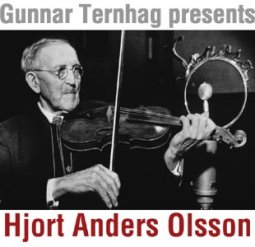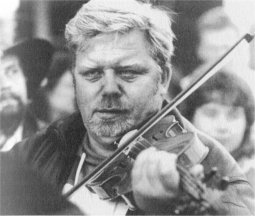| Dan Lundberg: Swedish folk Music - from village greens to concert platforms | |||
|
|
|||
|
Fiddler - artist - tradition-bearer |
|
|
|
FIDDLER — ARTIST — TRADITION-BEARER Visit the Hjort Anders-homepage One of the twentieth century’s greatest folk music idols in Sweden was the fiddler Hjort Anders Olsson (picture) (1865-1952) from the little village of Bingsjö in Dalarna in central Sweden. When Hjort Anders was “discovered” by the folk music transcriber Nils Andersson in 1907, it not only changed his situation as a musician but also his whole life. Several transcribers became extremely interested in Hjort Anders, but above all they were interested in certain parts of his repertoire. During the first half of this century, the work of collecting folk music was based on the more or less conscious aim of illustrating distinctive local and regional features. Thus the folk music transcribers were primarily interested in Hjort Anders’ older tunes with Bingsjö connections. His own compositions and his vast repertoire of tunes from the neighbouring province of Hälsingland did not attract the same amount of attention. This interest in Hjort Anders’ local Bingsjö tradition can be seen as an example of a change in attitude among the Swedish cultural élite towards the function of folk music-making. Previously the fiddlers’ music had been a means, an instrument, in a social situation; a necessity at dances and ceremonies. For the transcribers, the overriding mission, both for the transcribers themselves and for folk musicians, was to perpetuate a tradition. Min levnads afton efter Pekkos Per. Hjort Anders Olsson (GCD23) This view of folk music meant that greater importance was attached to
local traditions, and to the “authenticity” of the fiddler. When Hjort
Anders played Bingsjö tunes it was regarded as more “authentic” than when
he played Hälsinge tunes, although there was virtually no difference in
the learning process. Hjort Anders had learnt the tunes in his youth from
other fiddlers, and from his standpoint there can hardly have been any
difference between fiddlers from the province of Hälsingland and fiddlers
from the province of Dalarna, as long as the tunes were good and answered
their purpose as dance or concert music. In all probability it was the
other way round; the Hälsinge tunes were actually more exciting and out of
the ordinary for the Bingsjö audience than the “usual” local repertoire.
Besides this, Pers Hans’ fiddle-playing is characterised by a highly personal expression, coupled with an excellent technique. Together with natural local roots, this helps to overcome the conflict between the demand for authenticity and the demand for innovation.
Thanks to the media, individual fiddlers, and at times particular records, have come to represent local or regional styles in folk music. Today we can point to individual fiddlers such as Pål Olle and Pers Hans as central to the Ore and Östbjörka traditions, respectively. By extension they can be regarded as symbols for the traditional fiddlers’ music from the whole of the East Dalarna region, and in a wider international perspective they represent the Swedish fiddlers’ tradition in its entirety. Even if their music-making starts out from older local traditions, in many respects their personal style of expression has become a model for the development of a modern style of playing among fiddlers. |
|
Fiddler - artist - tradition-bearer |
|
|
|
|
|
|||
| Dan Lundberg: Swedish folk Music - from village greens to concert platforms | |||
 Like Pål Olle,
Pers
Hans Olsson
(Photo: Per-Ulf Allmo.)
Like Pål Olle,
Pers
Hans Olsson
(Photo: Per-Ulf Allmo.)